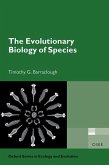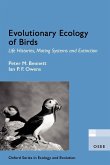Research reveals a set of cases where physical laws constrain the trajectories and end points of the evolutionary process. Each chapter deals with the underlying physics first, then examines the biological responses to selection. Examples of convergent evolution analyse the adaptation during the approach towards a physically defined optimum.
Recent research in biomechanics is increasingly revealing a set of special cases where universal physical laws constrain the trajectories and, more controversially, even the endpoints of the evolutionary process. For the first time this book brings together a broad range of examples from the latest research in evolutionary biomechanics to examine this phenomenon.
Hinweis: Dieser Artikel kann nur an eine deutsche Lieferadresse ausgeliefert werden.
Recent research in biomechanics is increasingly revealing a set of special cases where universal physical laws constrain the trajectories and, more controversially, even the endpoints of the evolutionary process. For the first time this book brings together a broad range of examples from the latest research in evolutionary biomechanics to examine this phenomenon.
Hinweis: Dieser Artikel kann nur an eine deutsche Lieferadresse ausgeliefert werden.








